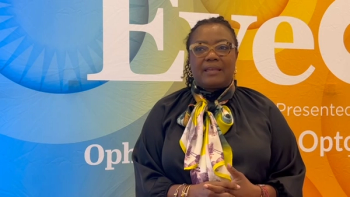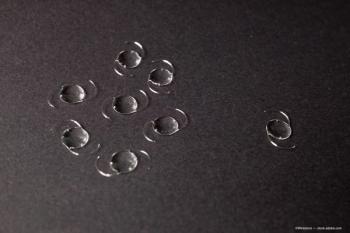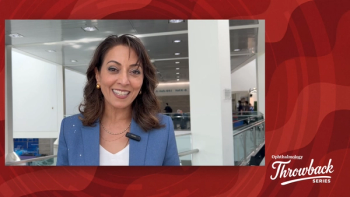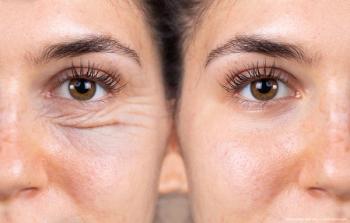
- Ophthalmology Times: October 1, 2020
- Volume 45
- Issue 16
Research: Femtosecond lasers challenge phacoemulsification
The FEMCAT study found that FLACS is not superior to conventional approach
Special to Ophthalmology Times®
The femtosecond laser is widely used in ocular surgery, particularly in refractive surgery with LASIK flap creation or small incision lenticule extraction, as well as in corneal graft or corneal inlays for keratoconus.
Owing to the very short pulse of the laser, the technology provides highly precise ocular tissue cuttings without causing collateral damage to surrounding structures.
The application of femtosecond laser to cataract surgery was the obvious next step of the technology and has led to femtosecond laser-assisted cataract surgery (FLACS) emerging as a recent breakthrough.
Related:
However, it has required additional developments such as specific docking systems and real-time imaging to enable cuttings of the opacified crystalline lens to be made without distortion of ocular structures during the laser procedure. Safety zones to preserve surrounding structures within the eye also needed to be considered (Figure 1).
As expected, laser-created capsulotomy is more precise, circular and centered than manual capsulotomy. In addition, corneal incisions have more reproducible squared-edge architecture
and greater resistance to leakage than manual incisions using a calibrated knife.
Furthermore, the fragmentation of the lens provided by the specific pattern of femtosecond laser impacts within the lens significantly reduces the amount of ultrasound used to remove the remaining pieces of the lens during the phacoemulsification phase.
Despite the femtosecond laser’s level of technical capabilities in cataract surgery,
the clinical benefit for patients remained unclear and a Cochrane meta-analysis could not determine the equivalence or the superiority of FLACS to phacoemulsification due to a low certainty of the available evidence and the unclear risk of bias in included studies.
Related:
With cataract surgery being one of the most routinely performed operations in medicine, it became clear that such a comparison was necessary, not just for patients but for healthcare professionals and decision-makers as well, to enable them to provide recommendations and potentially facilitate the spread of the technology.
Examining the clinical benefit
The FEMCAT trial was a large-scale, independent, randomly assigned clinical study which took place at five centers in France.
It was designed to compare anatomical, visual and refractive outcomes between FLACS and conventional phacoemulsification cataract surgery among 907 patients (1476 eyes) who received either bilateral or a unilateral cataract surgery by one of these two methods.
We included a wide range of cataract severity grades that were likely to be representative of the French population who undergo cataract surgery every year in France.
The success rate was defined by four relevant outcomes in cataract surgery: the absence of perioperative complications up to the 3-month visit; a best corrected visual acuity of 0.0 LogMAR or better; an absolute manifest refractive error below 0.75 D; and the absence of significant change in corneal astigmatism between the preoperative visit at month 3 post-operatively.
Related:
The femtosecond laser was found not to be superior to phacoemulsification in cataract surgery and thus FLACS failed to provide an additional clinical benefit for patients despite its advanced technical performance.
Indeed, we observed a high rate of uncomplicated surgery of 94.2% up to the 3-month visit without significant difference between the two groups. These results were recently reported in The Lancet.
The rate of absolute manifest refractive error below 0.75 D or 0.5 D were up to 81.4% and 76.5%, respectively, again without significant difference between the two groups.
Interestingly, we did not observe any difference in visual, refractive or anatomical outcome measures between the two groups whatever the cataract type or the cataract severity grade.
Related:
Level of evidence
In order to provide robust data on a large sample size, the FEMCAT trial was designed to minimize the risk of bias.
We strived to provide masking procedures until the last follow-up visit wherever we could, including having a sham laser procedure for patients randomly allocated to the phacoemulsification group.
Additionally, an independent adjudication committee composed of three independent ophthalmologists masked to the trial allocation was designated to evaluate all adverse events for increasing objectivity in safety evaluation.
We also standardized all the associated procedures (IOL optical and biomaterial characteristics or phacoemulsification machines) in each center to limit the risk of bias and to analyze only the safety and efficacy profile of the studied surgical procedures.
Finally, four surgeons experienced in cataract surgery were involved in the trial at each center. They were also likely to be representative of cataract surgeons
in France.
Cost-effectiveness of FLACS
FEMCAT was also a cost-effectiveness trial and so we collected all direct expenses related to the surgery using a real-life micro-costing approach based on detailed resources used during the surgery.
It included the prices of items such as knives, viscoelastic products, syringes or cannulas; the expense of the laser and disposable docking systems; and all of the costs related to phacoemulsification machines.
We also estimated all inpatient and outpatient costs, including those related to the follow-up or rehabilitation care arising until the treatment success measurement was obtained using the French national health data system, a claim database encompassing 98.8% of the French population.
Related:
With comparable clinical outcomes between the two groups, the cost of FLACS was significantly higher and thus the laser was found not to be a cost-effective procedure for cataract surgery.
Indeed, all inpatient and outpatient costs as well as all direct costs of surgical items or phacoemulsification machines were not significantly reduced in the FLACS group.
Thus the financial loss incurred by laser was not compensated, even in part, by either better clinical efficacy or a significant reduction in other direct costs during the surgical procedure or thereafter.
It is likely that the technology’s expansion will need to be facilitated by a significant reduction in femtosecond laser procedure costs in the future, including those incurred indirectly, for example by phacoemulsification machines that are used to aspire the fragmented lens.
Related:
Technical performance
The femtosecond laser was confirmed to be reliable and precise regardless of the cataract severity grade or the clinical experience of surgeons in our trial.
Also noteworthy was that the laser enabled reliable images of the anterior structure of the eye to be obtained irrespective of the cataract severity grade, even for very mature cataracts, and allowed for reproducible cuttings of ocular tissues in the FLACS group.
Moreover, we did not observe any significant adverse event during the femtosecond laser phase.
We reported only six cases of incomplete capsulotomy without subsequent anterior capsule tear. Ultrasound time and energy were also significantly reduced in the FLACS group.
Finally, we can also confirm the learning curve of FLACS was short without significant adverse events seen in the first cases by each surgeon.
Related:
FLACS perspectives
While FLACS does not provide an additional clinical benefit for patients over phacoemulsification cataract surgery today and was not found to be a cost-effective strategy in our trial, it is fair to acknowledge that this technology is still in its infancy and some perspective exists.
Indeed, FLACS has provided new insights into anterior segment surgery, particularly in pediatric cataracts, by enabling posterior laser capsulotomy, which, when it is performed following crystalline lens extraction, could limit the risk of amblyopia related to the posterior capsule opacification.
Additionally, owing to the real-time imaging technology and the three- dimensional zones of laser treatment or safety zones the surgeon can define prior to the laser procedure, this technology can also improve the surgical outcomes of some severe anterior segment diseases such as severe capsulophimosis.
Related:
The development of new
Furthermore, innovations such as new aspiration machines associated with the femtosecond laser could help limit the need to use the phacoemulsification machine and reduce the overall cost of the surgical procedure.
Finally, FLACS may also pave the way to a new era of automation and robotics in cataract surgery.
Related:
In conclusion, the FEMCAT trial provides useful information that healthcare providers and decision-makers should consider before implementing this new technology in routine practice for cataract surgery.
Although FLACS represents an innovation that could open new doors in ophthalmology, it is necessary to rationalize the overall costs of cataract surgery as well as consider the individual patient’s journey when considering whether or not it is appropriate to choose FLACS over phacoemulsification.
About the author
Cédric Schweitzer, MD, PhD, FEBO
e:[email protected]
Schweitzer is an ophthalmologist at Bordeaux University Hospital in France and is the principal investigator of the FEMCAT trial, which was fully supported by a grant for the French ministry of social affairs and health. The French ministry of social affairs and health did not participate in the collection, management, statistical analysis and interpretation of the data or in submitted manuscripts. Schweitzer has no financial disclosures.
Articles in this issue
almost 5 years ago
Antibiotic-steroid combination boosts confidence with deliveryalmost 5 years ago
Probe of IRIS registry: Anti-VEGF injections key treatment for PDRalmost 5 years ago
Pre-operative IOP hints after cataract surgeryalmost 5 years ago
Small-aperture single-piece IOL could fill unmet need in patientsalmost 5 years ago
Retinal implant improves quality of life in patients with RPalmost 5 years ago
Antihyperglycemic drug linked to reduced risk of new onset AMDalmost 5 years ago
Intravitreal implant offers anatomic, visual improvementalmost 5 years ago
Anti-VEGF monotherapy targets vitreous hemorrhages in PDRalmost 5 years ago
Eating our own cooking: Ophthalmologists standing behind their productsNewsletter
Don’t miss out—get Ophthalmology Times updates on the latest clinical advancements and expert interviews, straight to your inbox.


















































.png)


